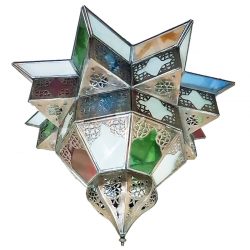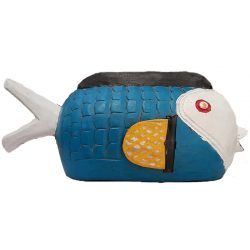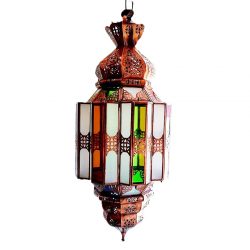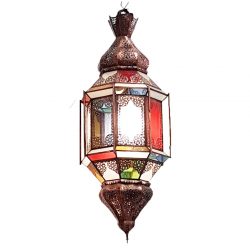Description
Staffs come in different materials and forms and most examples in Africa are made of wood.
Although commonly used for walking, some serve as ritual items and as symbols of authority.
One of the most famous types of staffs found on the entire African continent are the Orators or Linguists staffs found in the Ashanti kingdom in present day Ghana.
The Ashanti Kingdom is a loose confederation of multiple chiefdoms, each chief having his own royal court with a set of prescribed dignitaries and constituencies.
One of the most important dignitaries is the Orator or Linguist.
The Orator is to the chief what our Press Secretary is to the President. His job is to clearly repeat the Chief’s remarks at public assemblies and wittily rephrase them in “diplomatic” language.
In other words, to rephrase the Chief’s remarks in a way that is palatable to the audience yet at the same time confirms the power of the Chief. The Orator is formally known as the Okyeame.
To accomplish his mission the Okyeame engages in a verbal art form, which is the recitation of parables related to the power of the chief. In the Ashanti language there are thousands of parables of this sort.
When the Okyeame speaks he carries a staff with a detachable carved top or finial. The most valuable part of the staff is the top, which sculpturally depicts the proverb being referenced.
There is enormous diversity in the tops because of the number of proverbs, and these proverbs or sayings may vary from court to court.
For example, a staff top depicting a leopard holding down a porcupine depicts the proverb
“Only the leopard knows when the porcupine’s quills are down,” a short commentary on the Chief’s leadership, intuition and powers of observation.
A staff top showing one person eating while another looks on would be a reference to one of many proverbs about sharing.
This staff with its top depicting a lion would be a reference to the proverb
“An army of sheep led by a lion can defeat an army of lions led by a sheep.”
A top depicting an elephant might refer to the saying “If there was no elephant the buffalo would be the biggest creature.”
This, like many other sayings, means everything is relative, but there is only one chief.
In fact, individual staff tops might reference many related proverbs at the same time.
While the woodcarver is main creator of staffs, the Chief or Orator could ask other artisans to work with the carver.
Indeed, a combined effort perhaps depended on the materials that a staff demanded.
If, for instance, metal in the form of gold or silver was needed, then specialized artisans were called upon to contribute their expertise.
After the staffs were completed they were consecrated before being given to the Orator.
Europeans introduced staffs to the area in the 1700s and the Ashanti elaborated them to identify the Orator.
This unique art form still serves as a constant reminder that we are all connected by symbols of authority and oral tradition.






